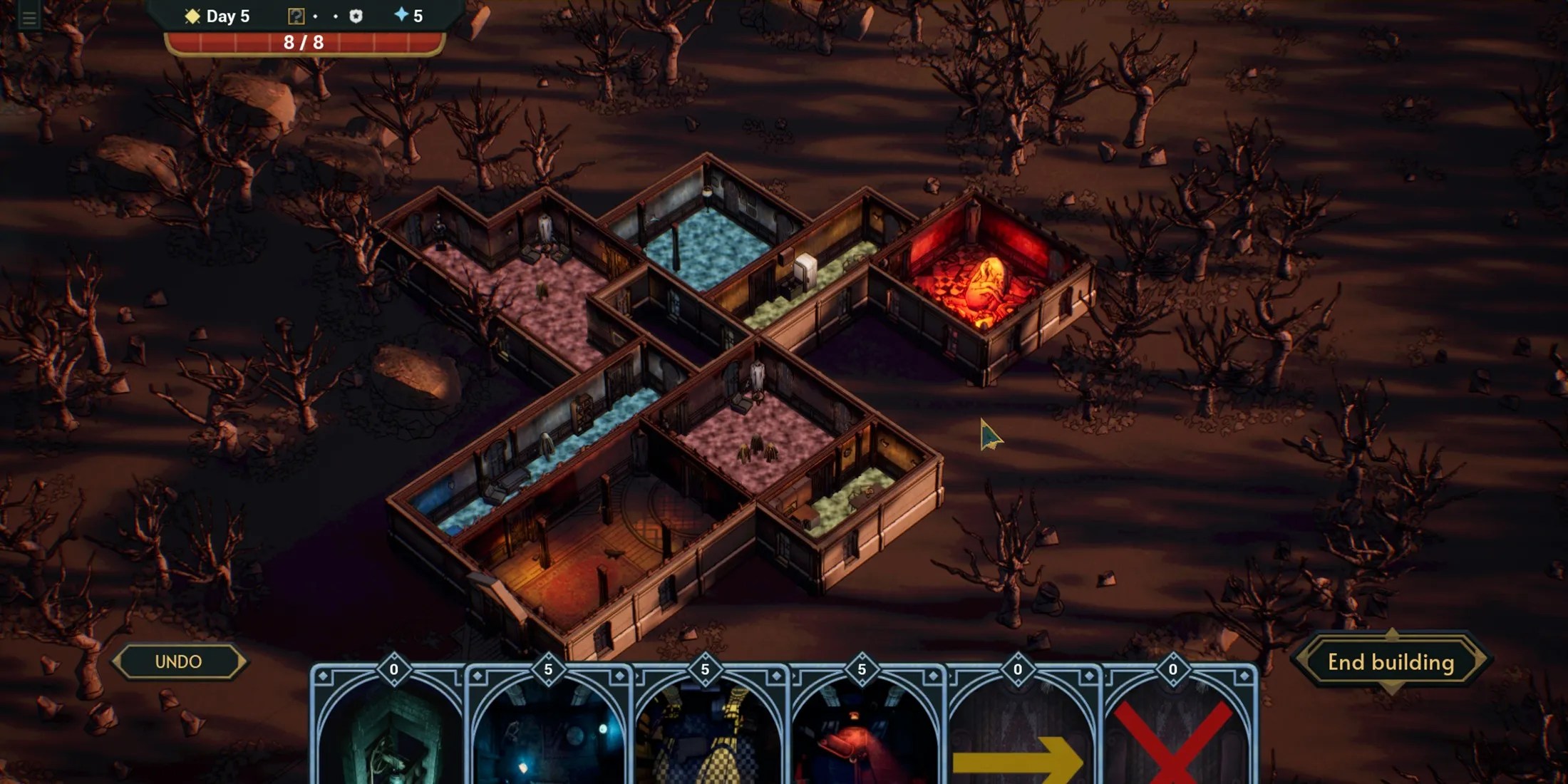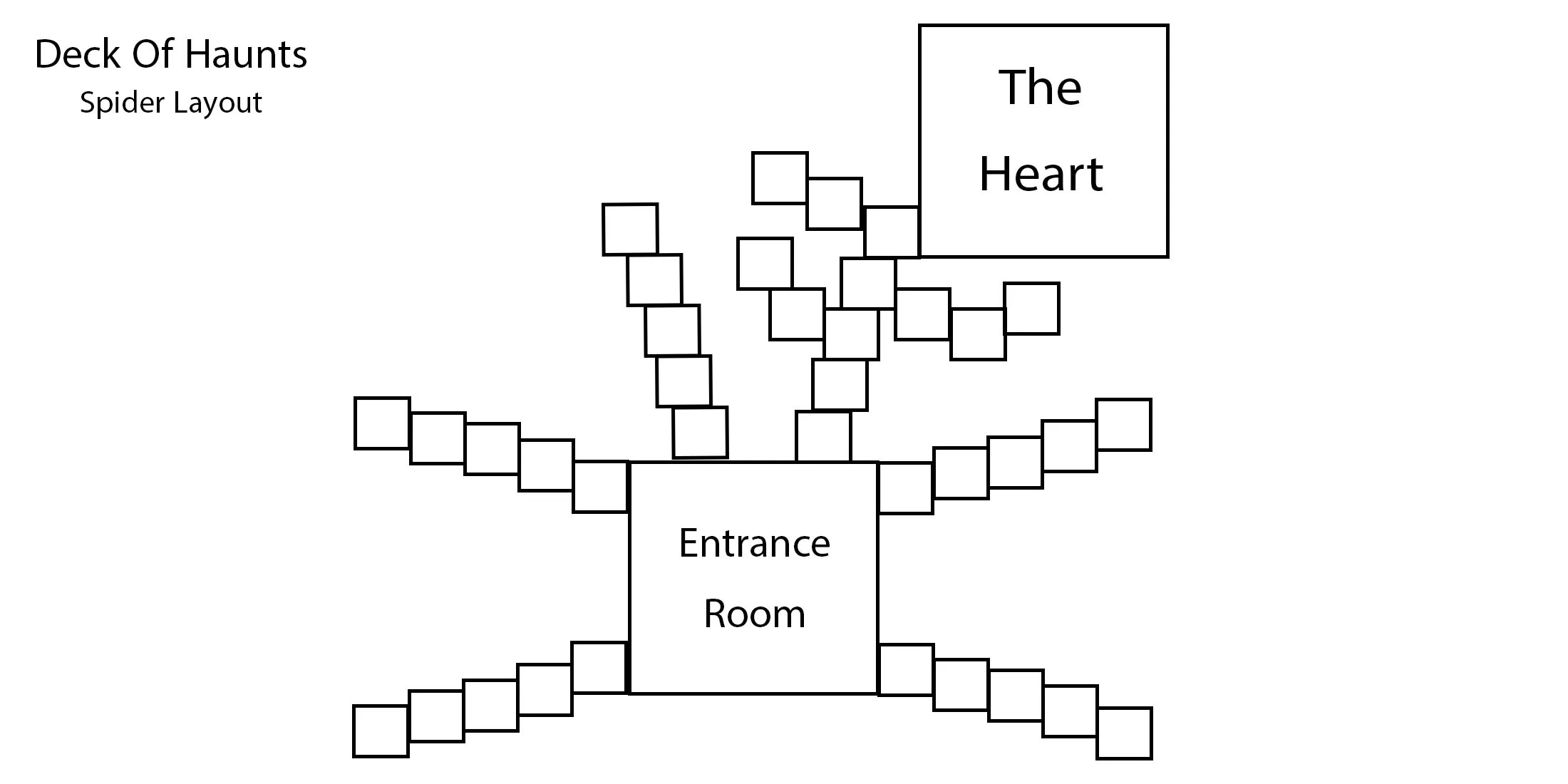Quick Links
Long afterSlay The Spire, deck-building enthusiasts eventually have another brilliant indie to feel the same vibes, and surprisingly enough, it’s notSlay The Spire 2.Deck of Hauntsis an utterly addictive roguelike experience that takes the bare bones of the deck-building genre and adds some creative features to it to lock the players to their desktop for hours after hours. Having the best cards will not necessarily win you the game inDeck of Haunts. The room layout is also an important aspect of the gameplay that players must pay attention to.
It will probably take you one or two playthroughs to get the hang of constructing rooms in the haunted house, but what if you got those valuable tips earlier? Depending on the points you gain after each night, the layout that you can design will be different. With these tips, you can build amaze-likehouse that sends every visitor to a different corner, and lowers their chance of discovering what they should not.

How To Design the Best Room/Building Layout In Deck Of Haunts
Players should follow two main purposes in the construction phase:lengthening the path to reach The Heartandsingling out visitors to slay them easily. Every visitor that discovers The Heart will reduce its health by one unit, and if the visitor is a Ritualist, they will keep damaging The Heart every turn after finding it. So, it’s important toprevent visitors from reaching The Hearteasily.
The first tip is tocreate only one path to The Heart. When multiple rooms or paths lead to The Heart, the visitors' chance of finding it goes up. But when there is just one path, you lower the chance, and only visitors who take that exact path will find it eventually.

The next suggestion is tolengthen the path that leads to The Heart by adding diverse rooms between the entrance and The Heart. Most enemies in the game only move one room per turn. When you have more rooms between the entrance and The Heart, you increase the number of turns that it takes for visitors to reach The Heart. That means more turns for you to kill them before they open the door to the secret room.
Having more rooms in The Heart’s path is a good idea, butbranching out paths is also necessary. One of the best things you can do in the construction phase is tocreate dead-end paths. Interconnecting paths to each other is never a good idea. When you create a dead-end path that branches out from the entrance, it will force visitors to get lost. If a visitor takes the path to a dead-end,they will eventually have no other option than to return to their starting point, which was the entrance room. And again, they might not even take the correct path, either, and end up in another dead-end.

The primary benefit of a dead-end path is thatit doubles the number of turns you have to get rid of the visitor. It’s also great to have dead-end paths branching from the correct path as well. So, even if one visitor takes the path towards The Heart, they still have the chance to get distracted by a dead-end before reaching the secret room.
This kind of layout is called aSpider layout. Each dead-end path is like one leg of a spider, which branches from its body, which is the entrance room in this case. This layout also helps with singling out visitors, especially if there is a Priest among them. As you may know,Priests will only take Damage or Drain when they are alone. So, it’s important to have a layout that can separate visitors from each other.




